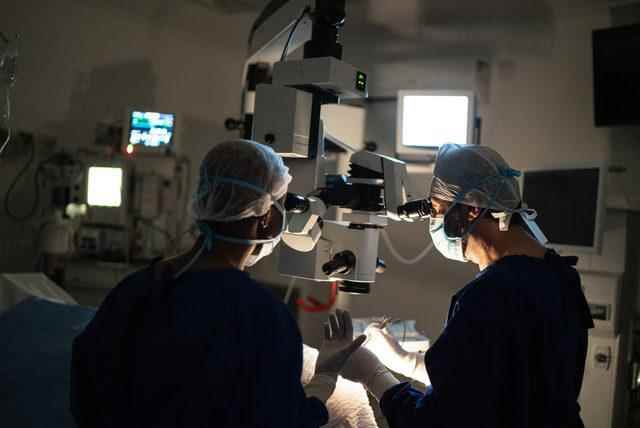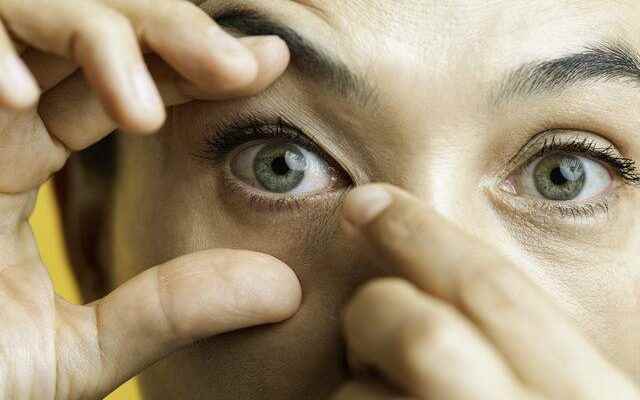Cataract is one of the most common causes of vision loss and vision loss in the world. According to the World Health Organization (WHO), cataracts are among the leading causes of blindness and visual impairment in the world, with 51 percent. Experts continue to develop new methods for this common disease.
One of these experts, Istinye University Faculty of Medicine Faculty Member Prof. Dr. Rıfat Rasier, years ago, developed a method that enables the conversion of single-focal lenses inserted into the eye to multifocal. prof. Dr. Rasier made the single-focal lenses used in cataract surgery multifocal with a new laser method he applied. The method received the best project award from ESCRS, one of the most respected scientific associations in the world’s eye field. Giving information about this new method, Prof. Dr. Rasier also made statements about the causes, symptoms and treatment methods of cataracts.
IF THE BABY IS A WHITE IMAGE…
prof. Dr. Rıfat Rasier gave the following information about cataract: “Cataract is the most common cause of vision loss in the world. In order for the image to be formed, the light must first pass through the frontmost transparent layer of the eye, which we call the cornea. Then this light passes through another transparent tissue, the lens in the eye, and reaches the retina. The lens is a transparent, convex structure on both sides. It allows the light coming into the eye to be refracted and focused on the visual center of the image.
The lens should be transparent for life, if it loses its transparency at any time, this situation is called cataract. It causes difficulty in seeing the person by causing problems in reaching the retina and reducing the contrast. The lens in the eye loses its transparency and takes on the structure of frosted glass. Just as a person looks through a frosted glass, he sees the image as hazy, and in a person with cataracts, the image he normally sees becomes hazy, icy, foggy. In advanced stages, a mature cataract can reduce the person’s appearance to a level where only light can be noticed. The person looking at the person with such advanced cataract may notice a white image instead of blackness in the pupil.
THERE ARE MANY DIFFERENT TYPES OF CATARACT
Stating that there are many different types of cataracts, Prof. Dr. Rasier listed them as follows:
Age-related cataract: It is a type of cataract that occurs when the lens loses its water content as age increases and the protein ratio in the lens increases. After the age of 40, the probability of developing age-related cataracts doubles in every 10-year period. While the probability of developing cataract is 5 percent around the age of 65, this rate increases to 50 percent at the age of 75.
Congenital cataract: Newborn babies can develop congenital cataracts due to infection, a blow at birth, or an incomplete development of the baby’s lens.
Traumatic (injury) cataract: It is a type of cataract that develops as a result of penetrating or blunt blows.
Cataracts developing due to a systemic cause: It is a type of cataract that develops due to a disease such as diabetes, thyroid disease, develops as a result of exposure to a toxic substance, develops as a result of exposure to ultraviolet, or develops as a result of the use of drugs such as cortisone and diuretics.
In addition, smoking, air pollution and excessive alcohol consumption are also causes that can accelerate the development of cataracts.
WHAT ARE THE SYMPTOMS OF CATARACT?
prof. Dr. Rasier states that the diagnosis of cataract is made by detecting a decrease in your vision level with the examination performed by your ophthalmologist, and when the lens is examined with a microscope, the opacity of the lens and the decrease of the transparent parts are observed. Rasier summarizes the symptoms of cataract as follows:
- Foggy, hazy, dirty appearance as if looking through a frosted glass
- Rapid change of eyeglasses numbers due to change in lens
- changes in color vision
- With the development of cataract, the eye shifts to myopia and therefore the need for near glasses decreases. In general, patients who have started cataracts express themselves that they have started to see their relatives better.
- Scattering of lights especially at night
- Scattering of images during the day
- Double vision as if images overlap
HOW IS CATARACT TREATED?
prof. Dr. Rasier explained the contribution of the use of multifocal lenses to patients as follows:
“Cataract treatment is surgery. If the person’s vision level is very low, if the visual level is affecting the person’s quality of life, or if the lens is very hard during the examination, cataract surgery should be performed. The first thing to do is to determine the level of vision of the person with the correction of eyeglasses numbers. If the image is low despite the glasses, surgery is required to remove the lens that has lost its transparency.

The name of cataract surgery is phacoemulsification surgery. For this surgery, the opaque lens is broken up with sound waves called ultrasound. After the lens is removed, an artificial lens is put into the eye. The lenses placed in the eye can be single-focal (only near or only far view) or multifocal (far-mid-near view) lenses in today’s technology. The benefit of multifocal lenses for the patient is that they provide intermediate and near vision without distorting the distant view. Thus, the need to use glasses is eliminated while the cataract is surgically removed, causing a blurry image. The number of people who need this treatment, anyone over the age of 40-42 who wears eyeglasses may need this lens. However, since multifocal lenses create a slight contrast loss at distance, they are not recommended for those who have no problems with distance vision.”
